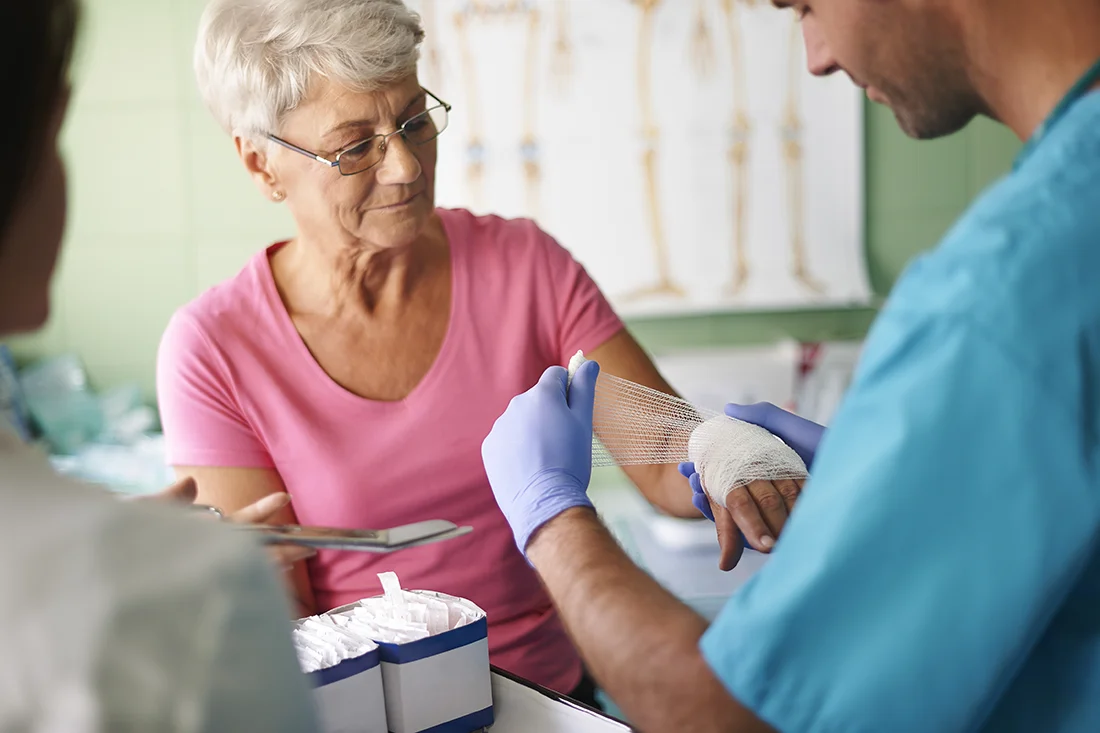Right now, there’s more information than ever before about what it means to practice effective wound management. From therapeutic innovations to advances in our knowledge of wound dressings, professionals in the field have a wealth of new options. That said, one of the most critical factors in high-quality wound care isn’t related to any scientific breakthrough. In fact, it isn’t a treatment at all, though it certainly has the potential to make life better for patients. We’re talking about communication.
If you’re in the field of wound treatment and management, your knowledge is highly specialized. As a result, you’ve probably witnessed your share of confusion—both from patients and health care professionals outside of your field. There’s only one way to overcome this confusion and prevent the poor healing outcomes that can result. In this post, we’ll look at how clear, direct communication can lead to better wound management.
Coordinating the Network of Care
Healthcare practitioners typically rely on multiple providers within and outside of the organization to provide holistic wound care. Care coordinators and primary care physicians can play critical roles in wound healing. Often, so can nutritionists, physiotherapists, and pharmacists, among others. The Canadian Home Care Association (CHCA) notes that interdisciplinary teams can be especially helpful in the treatment of “hard to heal” wounds. Furthermore, family members or personal support workers must also be involved and up to date in order to deliver the best care.
Of course, patients are also an integral part of the ongoing wound management process—as are family caregivers. These care circle members may require frequent contact with care professionals in order to access support and instruction. Together, an informed and supportive circle of care can help patients achieve a higher quality of life—and in many cases, better health outcomes. It’s clear that communication is the glue that holds these circles together. But all too often, breakdowns occur.
Effectively Treating and Healing Patient Wounds
Have you ever encountered an infection or complication that could have been prevented with the correct care? Perhaps you’ve been surprised to find that a patient doesn’t understand a set of basic instructions related to their wound care. Situations like these can often be avoided through clear, direct interactions between care circle members. But that’s not always possible—at least not yet.
At the moment, health care is becoming more complex. Large, interdisciplinary teams are working together across vast geographical areas. Often, patients are receiving care outside of controlled hospital environments. In many ways, these are positive developments. They represent big strides toward more patient-centred care. However, there are also downsides. Complex communication processes—including those related to wound care—need to be managed carefully.
Back to Basics
At the most basic level, health care communication is about how one professional transfers important information to another, or to a patient. It’s about ensuring interactions lead to comprehension, which in turn leads to the highest quality care possible. There’s a commonly held belief that 93% of communication is non-verbal. While this number is very much up for debate, we know that body language and tone of voice count for a lot. Unfortunately, we sometimes rely on these cues when what we really need is to process complex information.
Interpreting health care information incorrectly can have a very real impact on patients. This risk may be especially high when specialists get involved, since their concepts and terms are often unfamiliar to other care professionals. For this reason, clear and direct communication—whether it’s spoken, written, or recorded, is absolutely critical in wound management.
During exchanges with other care circle members, it pays to employ a few basic tips to ensure you communicate clearly. Be very specific about what you need. Subtly prompt the person you’re speaking with to repeat what you’ve told him to ensure he understands. Listen attentively—an action that requires you to move away from distractions, whenever possible. Of course, these principles don’t only apply to interactions between professionals. Communicating clearly with patients can help you provide them with care that’s in line with their goals and preferences. Plus, studies show that high quality communication leads to higher levels of patient satisfaction.
Managing Wound Care Remotely
Home care is a relatively new delivery method in Canada. Across many organizations, the workflows that support it are still being established. In many ways, Ontario is ahead of the pack. The province’s government has explicitly stated its home care commitment—and provided funding to back up that claim. But inefficiencies are still bound to crop up. Now consider wound management as a component of home care. The wound care field is still developing, and doing so rapidly. With so much growth and change occurring, there’s a lot of potential for complications, including miscommunication.
The CHCA sums it up best. According to a recent report from the organization, “The absence of a clearly articulated standardized and systemic approach to wound care in the home care sector promotes inconsistency, diminishes the likelihood of sustainability and increases care costs”. But how can leaders set up such a system? And what role can care providers play?
Developing and maintaining a set of guidelines for communication within care teams can go a long way. And technology can help. For years, telemedicine has helped patients connect with health care providers. Electronic medical records have made it easier to centralize patient information, allowing practitioners to communicate sensitive health information.
But as digital communication becomes a bigger part of our lives, more convenient and intuitive solutions are emerging. Today, mobile apps can connect entire circles of care at the touch of a button—from the wound care expert to the patient with mobility issues. They can also make it possible for practitioners to exchange images, videos, and other forms of information securely.
In essence, that’s what high-quality wound management, and good communication is all about. Ensuring that the right information is always accessible to the right person at the right time.
